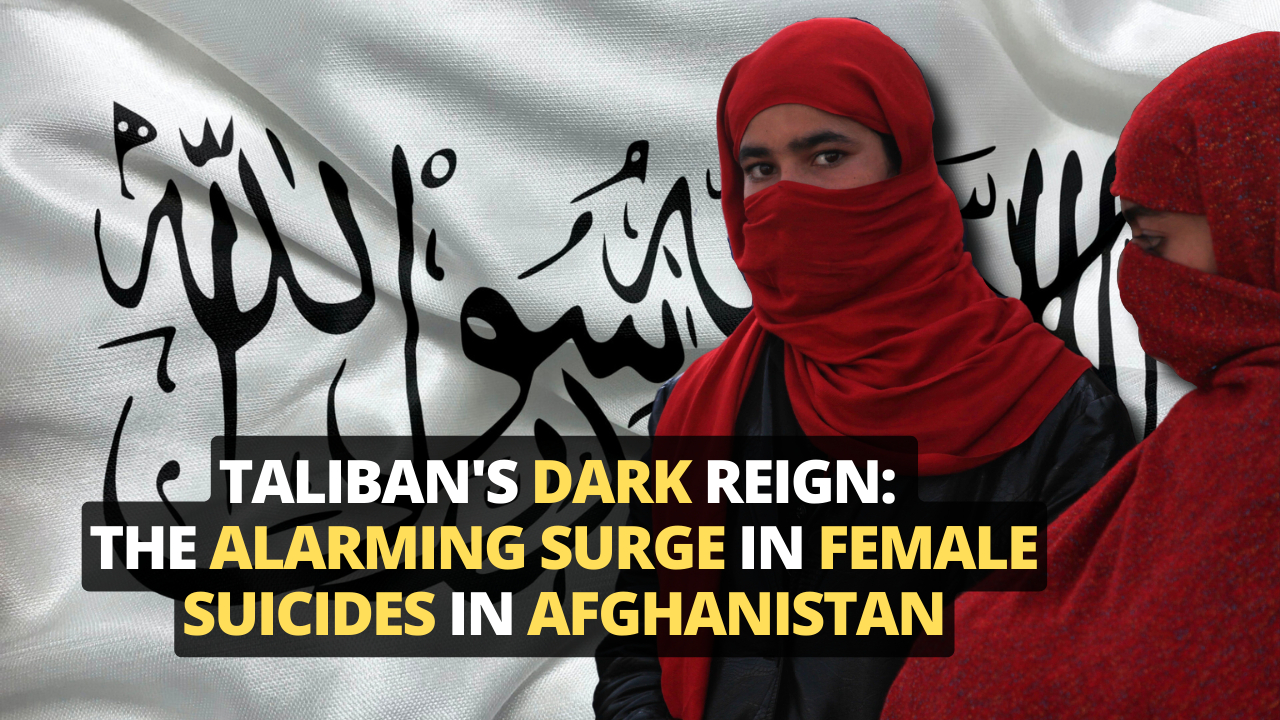
Afghanistan has seen a rising surge of women taking their own lives or trying to do so since the Taliban took over the country in 2021 and made attempts to reduce women’s role in public life, showing desperation among Afghan women to escape a regime that constantly deprives them of rights and freedoms.
“Afghanistan is in the midst of a mental health crisis precipitated by a women’s rights crisis. We are witnessing a moment where growing numbers of women and girls see death as preferable to living under the current circumstances.”https://t.co/4uSTF6kT2d
— Heather Barr (@heatherbarr1) August 28, 2023
Figures showing this disturbing trend have been collected from public hospitals and mental health clinics across a third of provinces in Afghanistan. The data health workers in Afghanistan privately agreed to publish contained information from August 2021, during the time the Taliban successfully seized power in Afghanistan, to August 2022. This data showed that the country is facing a mental health crisis, and Afghanistan is one of the very few countries in the world where more women than men die by suicide.
But even though female suicides are on the rise, health workers say the Taliban has not published data on suicides and has even banned them from sharing up-to-date statistics in multiple provinces nationwide. The Taliban also repeatedly declined requests for comment by media outlets on the rising suicide rates in Afghanistan.
this is heartbreaking.
— the harlequin pub (@harlequinpub) August 30, 2023
Around the world, more men than women die by suicide. Afghanistan was no exception to this, at least until 2019, the last year where official records were still available. However, data from August 2021 to August 2022 showed that out of the country’s 11 surveyed provinces, only one accounted for more suicide attempts by men than women.
That province was Nimruz, a southwestern province bordering Iran. Nimruz is also the main jumping-off point for men trying to cross Iran illegally, with those failing in their attempts to cross the border to Iran sometimes committing suicide there.
In all the other surveyed provinces, women made up a majority of those who died by suicide or were treated after attempting to kill themselves, with the youngest victims recorded as being in their early teens. Females made up more than three-quarters of recorded suicide deaths and treated survivors.
that's what happens when people take religion seriously. abrahamic religions don't see women as human beings
— Oren Elbaum (@OrenElbaum) August 29, 2023
Suicide is considered taboo in the Muslim-majority country and is often covered up. Women who attempted to take their own lives are not taken for treatment, while those who died by suicide may be buried without a record that they took their own lives.
Human rights activists and United Nations officials have raised concerns over the sharp increase in female suicide rates in Afghanistan. They blamed the Taliban’s increasing restrictions against women on every aspect of public life, from a ban on education above the elementary level to prohibitions from entering parks, bathhouses, salons, and other public spaces.
Nevertheless, a survey published in the academic journal BMC Psychiatry and conducted two months before the Taliban took over Afghanistan found that nearly half of the country suffered psychological distress, fuelled by the country’s long history of poverty and conflict.
so would I
— Me&G0d (@Child0fSource) August 29, 2023
However, increased forced and underage marriages and the loss of freedom and hope have made Afghan women more vulnerable to mental health crises. In the western part of Herat province, which recorded the highest number of female suicides and attempted suicides, a provincial hospital reported that about 90% of mental health admissions were “breaking down under the weight of the new restrictions,” according to a medic working there.
